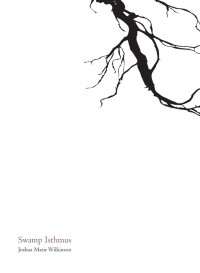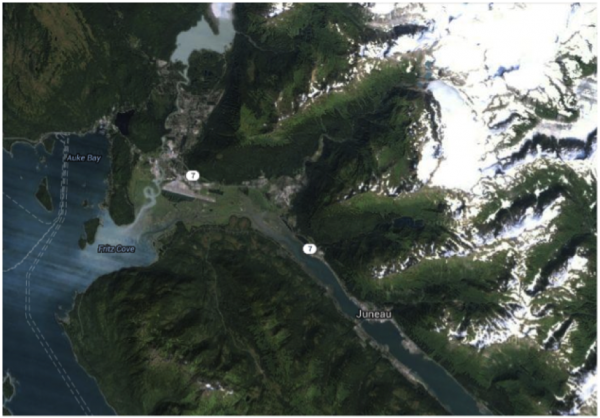 Swamp Isthmus
Swamp Isthmus
by Joshua Marie Wilkinson
Black Ocean, 2013
88 pages / $14.95 buy from Black Ocean
1. I’ve been working on this since this past spring. After reading Beyond The Like Factory & The Hatchet: Rethinking Poetry Reviewing by Joshua Marie Wilkinson, I knew I had to finish this review. This is actually a scary thing to write now.
2. Swamp Isthmus is Joshua Marie Wilkinson’s first book with Black Ocean and the second book in his No Volta pentalogy (first is Selenography, Sidebrow 2010; third will be The Courier’s Archive & Hymnal, Sidebrow 2014). I’ve not read Selenography so there is perhaps some things I’ve missed by not having done so.
3. A swamp is a living-dead landscape; the living feed off of the dead and dying, the most dead areas are filled with the most life and the least dead areas are those with the least life.
From the Hart Crane epigraph (The resigned factions of the dead preside) in the very beginning of Swamp Isthmus, Joshua Marie Wilkinson creates a zombie landscape, a zone that infects the living with symptoms of deadness. In a zombie film this deadness comes to the living with capitalist critiques of our alienating existence, but in Swamp Isthmus we see a zombie that carries critiques of the ecologic and nostalgic sort.
4. The lyrics of Swamp Isthmus are a living-dead endeavor: precise breaks eluding a narrative; linearity reduced to phrases contained in the line.
to disappear you must
tunnel discreet
descrying over nightfall
with unclogged wind
this coast is longer than a train track
needing coarse woolen cloth &
the clothes you’re in
so needing a bad song
to whistle what’s known
but may stick
to another’s mouth
5. Similar to what Zach Savich says about Wilkonson’s lyrics, to kill a zombie takes precision: remove the head, destroy the brain.
6. In The Dead Rustle, The Earth Shudders, Evan Calder Williams points to something that is obvious in Swamp Isthmus:
“…the undead have never really been dead in the first place—they never died.’
7. To cross a swamp takes precision and a mind for the contradiction of the living-dead: step here, not there; eat this, not that; drink plenty of water, but don’t drink the water.
footpaths marked by
false stars
it gathers up in
this bladder of light
8. the trees palsy/ to our bad lines.
9. In some respects, there is an admission with these lines of the failure of poetry to enact this landscape; the lines aren’t good. In some respects it’s proof that poetry works: even the bad lines cause the landscape to shudder.
10. There may be an actual “Swamp Isthmus.” The book’s title might be a reference to Gastineau Channel in Alaska, which at low-tide creates an isthmus from mainland Alaska to Douglas Island. Fritz Cove Road, mentioned in the section, I Go By Edgar Huntly Now, is a road that “dwindles down/to a patch of currants” (note the clever word play on ‘currents’) but it also ends at the place where Gastineau Channel meets Fritz Cove. A place that may eventually be unnavigable by watercraft. A place severely affected by glacial melt/global warming.
11.

So we see a landscape dying/living through death and acts as a landmark for inspiring somnambulists/zombies. It’s not just a metaphorical isthmus, but an actual isthmus. Not a metaphorical swamp, but an actual swamp.
12. We also see plenty of imagery from another swamp, another ecological/natural disaster: Hurricane Katrina.
& the river flood strands a mutt
I don’t know on a porch
but it’s not river water proper
it’s fish & shit & people face down
floating by
telephone lines
& some wires cabled into the muck
no horror to come it is here & so
my radio clicks on
pg 65
white spool of our kite freed
but what returned
was the roof floating down
from upriver
pg 11
13. So what’s the difference between, or what is the role of each, the living and the dead? The dead giving the living something to do, tasks to complete and memories to relive. The dead relive in relived memories.
Page 53, the start of the poem, Cold Faction, stands as a way to demonstrate this (all of Cold Faction is amazing and beautiful, but the first page really shows how the living and the dead interact/define one another):
three men already four
pitchers deep
one with a shovel rests it
on the casket & won’t re-
commence the digging
till the dead start to
put their clothing back on
take their sketches
to a pawn
it’s here the yellow eyes
of the so-called
dead turn on like
bus engines
& we have a little
bourbon
we have a
little more bourbon
14. This is not the sexy zombie we buy into for Halloween. This is not the dangerous hungry zombie we see in The Walking Dead. This is a zombie created by intimate contact with the dead.
15. By bearing and burying the dead, the living become the “so-called living”.
16. Evan Calder Williams calls this “one-to-one transmission.” A zombie hoard is a totality, a group to blame for the failure and infection of the individual, perpetuating the totality.
17.
so for the dead to carry us around
they’re stapled to lost passwords
tricking no shame
in what we unearth
loss is a feature of what you’ve failed
to divide yourself from
more gossip by thumbtack
away from this now
says something other than
the dead are forever under us
& it gets its draggy nets out
18. The zombie landscape in Swamp Isthmus is not a totality, but a singularity; the surface of a point calling/pulling/dragging the living into an intimate encounter with the dead.
19. Edgar Huntly: A somnambulist finds a somnambulist/murderer digging in the woods, kills a beast in a cave and eats of its flesh, discovers/murders the murderers of the dead he’s been looking for all along.
20. Like Edgar Huntly, in Swamp Isthmus it’s the woods that pull us, the “so-called living,” into looking for the dead. The woods pull us in the dead of sleep to the digging in our dreams as a way of forgetting the dead, forgetting our murdered victims, rivering through your lines/ to a digger of grief.
21. loss is a feature of what you’ve failed/ to divide yourself from
22. This is how we become the “so-called living”: we try to forget the dead, divide ourselves from them, and it’s our inability to do so which brings us to our loss.
23. Is this chasing/fleeing from the dead a nostalgia? A dive into/escape from our pasts?
24. Chasing is the wrong word. Chasing denotes speed and an end-before-means goal: you chase to catch. Swamp Isthmus is a slow lurching of the living dead or a demonstration of loss; the goal is the means. In this way, the zombie acts as an elegy for our loss; a performance of grief.
25. What Swamp Isthmus shows us is our inability to separate, to divide ourselves: we can’t forget the dead like a password, they’re not just underneath us. They’re attached to us and we’re transformed by our contact, even in our memory, with the so-called dead. The topography created by the dead pulls us to their locus, not as if we are called to worship, but as if we are afloat on a river drifting into an ocean, but getting caught, trapped in the detritus of the swamp.
Tags: 25 Points, black ocean, joshua marie wilkinson, Swamp Isthmus
